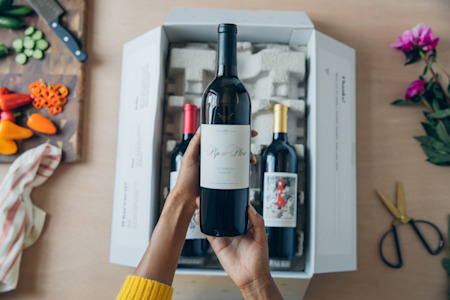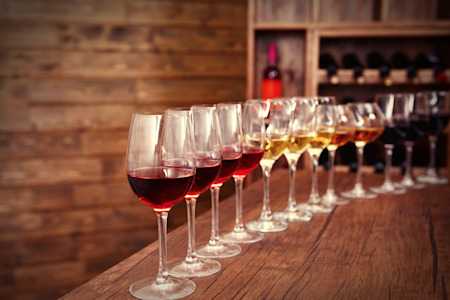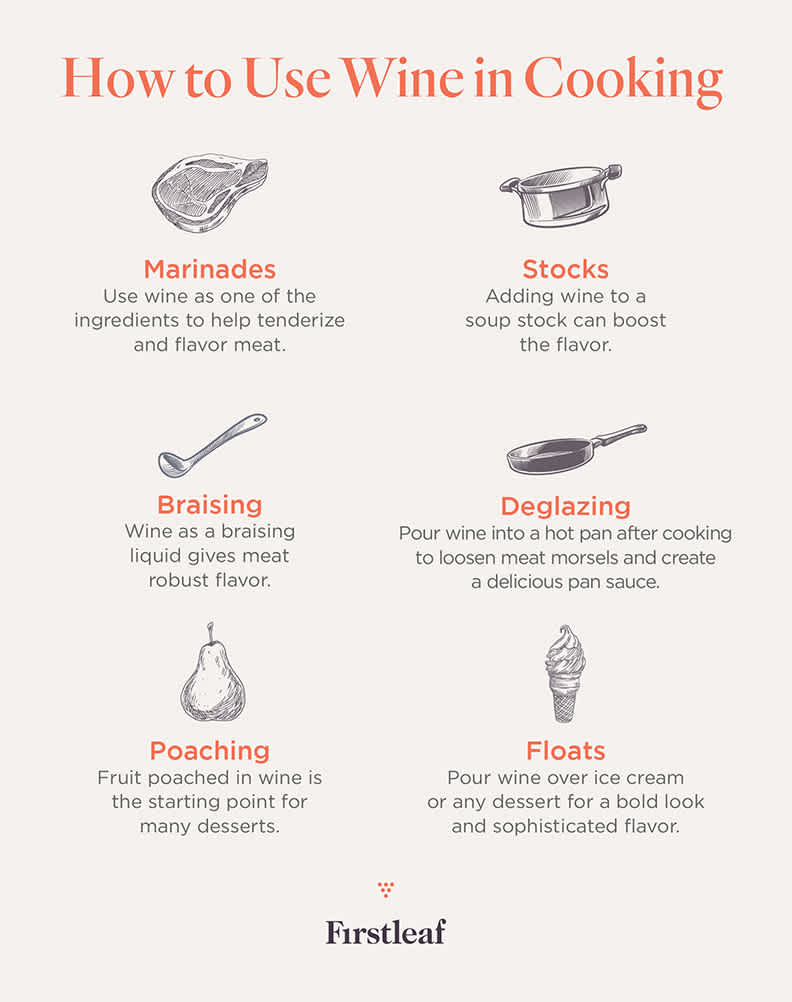What is Cooking Wine? Cooking Wine & Cooking With Wine
Cooking Wine is different than cooking with wine, learn about the differences and a few dishes that need a special touch
Wine has been used to cook amazing dishes for a long, long time. The Romans were known for including wine in sauces, braises, and stews. The French make Coq au Vin, the Italians have risotto and chicken marsala, the Chinese have Chinese cooking wine, and the Japanese use sake for all kinds of dishes.
Food and wine paired or cooked together can be a dream come true. Whether the wine is from your favorite winery or from your local grocery store, a little bit of wine can add a lot of complexity to a dish.

Sign up for the Club Today
Join Firstleaf to taste delicious wines from all over the world and learn more about these grapes. The club has featured amazing examples, take the quiz to get the pairings for your individual palate.
Take Our QuizIN THIS ARTICLE:
Want personalized wines?
Get your first box of wines for $44.95 + free shipping.

What is Cooking Wine? Cooking Wine vs Wine
Cooking wine is different than your average bottle of regular wine. This wine was never meant to be drunk, but it was meant to be included as an ingredient in cooking. Cooking wine has salt and other preservatives that extend the shelf life of the product and keep it from spoiling. These small additions allow it to legally be sold at grocery stores, but you wouldn't want to drink it. This also means that when you open a bottle, it can be used for a long long time. Unless you're running a restaurant, you'd never need to buy a whole case of cooking wine.
But let's say a recipe calls for cooking wine and you don't have any on hand. You can substitute almost any leftover wine you have in a recipe as long as you stay close to the flavor profile and color called for. Substituting red wine for white wine can have a significant impact depending on the dish, but if you are an adventurous cook, it could be a fun journey. Fortified wines, like dry vermouth or dry sherry, are other good options for cooking as the high alcohol content preserves them from going bad.
It should be noted that there is contention in the cooking community, and some chefs think that using leftover wine (or bad wine) is fine, whereas others disagree and call for only the best wine in their dishes. We think this is a somewhat silly argument when the wine is being cooked (as opposed to being used as a final topping). Heat exposure will destroy much of the wine's flavor, such as tannins or those imparted by oak barrels. So we wouldn't ever recommend cooking with expensive wine.
Uses for Wine in Cooking
There are so many applications for how we can use wine when we cook. Wine brings acidity, sweetness, and flavor to a dish which enhances the complexity and makes a better final product.
Marinades
Marinating meat or vegetables in wine, herbs, vinegar, and other flavoring agents, is a great way to ensure what you cook is flavorful and retains some moisture in the cooking process. A good rule of thumb is to use one cup of wine for every cup of oil in a marinade.
Stocks
Stocks are used as bases for soups and grains, and can be much more flavorful when accompanied by the right type of wine.
Braising
Roasting meats (usually red meat) in a liquid base (especially when flavored by good wine) creates a robust flavor and tender finale for a dinner entree.

Shop Award-Winning Wines Now
Looking for a new bottle of wine to up your cooking technique? Shop award winning white and red wines in our wine store.
Shop Wines NowDeglazing
Wine can be poured into a hot pan that has been used for searing or for braising, to help loosen what has stuck to the pan (called the fond). This is the base for many pan sauces which are the foundations of French cooking.
Poaching
Fruit can be cooked in wine to form the base of many Italian desserts, or poached fruits can be used to form the filling for pies.
Floats
Simply pouring a bit of sweet wine over the top of ice cream or other cool desserts is a delicious way to finish a meal.
Some Dishes Featuring Specific Wine Varietals
If a recipe calls for cooking wine a table wine will suffice, but the reverse is not always true. Different wines bring different flavor profiles, and sometimes when a recipe calls for a dry white wine, a Marsala will not cut it.
We wanted to list a few dishes that are either closely associated with a certain wine, or are a particularly good use for a varietal.
Pinot Noir: A good pinot is earthy, but still has good forward fruit. We would love to pair this with braised meats and mushrooms or maybe roasted duck breast. Pinot is also a good candidate for making a rich pan sauce -- with pork chops, for example.
Chardonnay: The buttery full-bodied Chards will be a great addition to a coq au vin blanc. It could also be used to make a beurre blanc, a delicious butter and wine mixture that can be spooned over vegetables and other meats.
Sauvignon Blanc: Sauvignon blanc typically doesn't carry heavy flavors that will overwhelm lighter dishes, so we would recommend cooking the sauvignon into a cream sauce or with seafood dishes.
Riesling: Riesling has many different flavors that can show through depending on how it is made, but look to classic German and Alsatian dishes. Pâté in a riesling jelly is a classic, as is chicken braised in riesling and cream.
Pinot Grigio: The lightness of pinot grigio will be very helpful for seafood dishes and could be used to poach light, Mediterranean fish with olive oil. Served over pasta, the pinot grigio flavored cooking liquid makes a delicious sauce.
Zinfandel: The big fruit flavors of zinfandel work well with gamey dishes. Think about cooking venison or wild boar and using zinfandel to make a pan sauce.
Merlot: We love the flavors of duck breast and merlot. Make a rich, buttery pan sauce to accompany it.
Cabernet Sauvignon: Risotto tinted with a dry red like cabernet is a great side dish that can be paired with pan-seared scallops or roasted chicken.
Chianti: Classic pairings for cooking with Chianti include lamb, boar, and offal all braised in rich Chianti.
Syrah: Syrah is another wine that is great for making pan sauces and braises. We really love it as a pan sauce that gets spooned over grilled red meats.
Sparkling Wine: Sparkling wine (and particularly champagne) is a classic addition to a lot of desserts. Truffles, mousses, and foams can be pepped up with a little bit of sparkling wine.
Vermouth: Vermouth is a classic cooking ingredient due to its high acidity, and can be used as a base for sauces and braises. We would recommend trying it in chicken Provençal.
Madeira: Madeira can be a magical addition to dishes, and works particularly well with gamey flavors. It can make great sauces for game birds and it is an integral part of making some types of cake.
Sherry: Sherry is used to add acidity to many glazes (for desserts or savory dishes) and makes an incredible vinaigrette.
Cook With Wine to Elevate Your Next Dish
The complexity of wine allows for an almost endless amount of methods to use it to elevate your cooking. Whether you’re an experienced home chef or just getting started, experimenting with different wine cooking techniques will not only enrich your understanding of cooking but wine as well.
IN THIS ARTICLE
Want personalized wines?
Get your first box of wines for $44.95 + free shipping.


WinePrint™ by Firstleaf
Are you looking to learn more about your wine preferences? Check out our Wine Print for an in-depth look at your personal tasting profile. Discover your favorite wines, varietals, regions, and tasting notes and get personalized recommendations wherever you are.
Learn More
